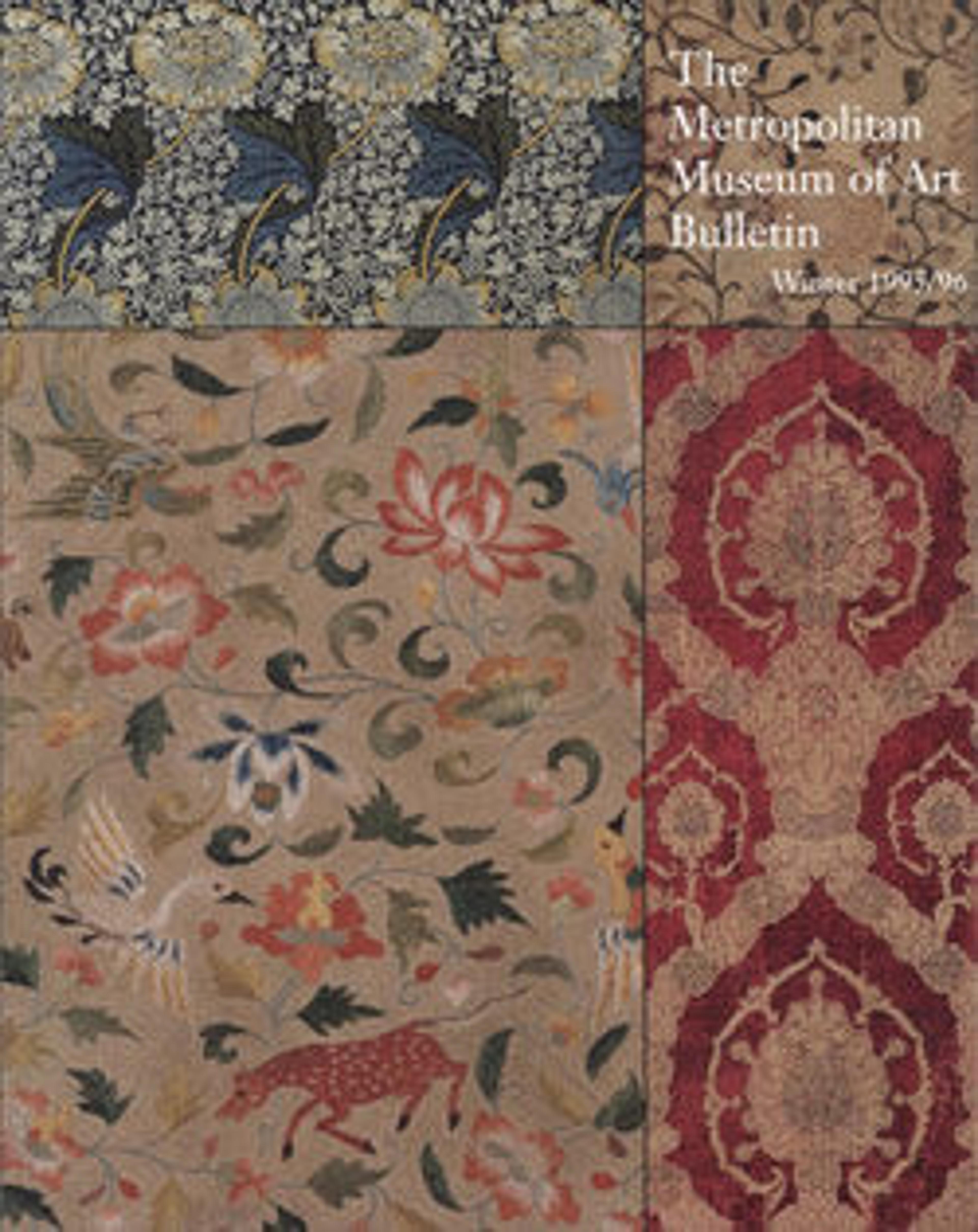Cravat end
Figural lace panels such as this one were items of gentlemen's high-fashion neckwear, meant to be attached to the end of a long, fine fabric cravat. The elaborate imagery, time-consuming to achieve, made the panels extremely expensive accessories. Drawing inspiration from contemporary formal gardens, the design of this example centers on a fountain with water jets that issue from the tip of Amor's raised arrow and fall to fill a basin for swimming birds. Set among the parterres planted with tulips and other flowers is a fountain in the form of the mythical wyvern, spouting water from its mouth, and garden statuary representing a nesting bird. A whimsically incongruous dagged cloth is festooned—tied to trees and secured by overlarge tassels.
The ambiguous term point d'Angleterre does not refer in this instance to needle lace or the country of origin, but to a group of highest quality bobbin laces made in Brussels. The reference to England may denote the principal market for this type.
The ambiguous term point d'Angleterre does not refer in this instance to needle lace or the country of origin, but to a group of highest quality bobbin laces made in Brussels. The reference to England may denote the principal market for this type.
Artwork Details
- Title: Cravat end
- Date: mid-18th century
- Culture: Flemish, Brussels
- Medium: Bobbin lace, point d'Angleterre, linen
- Dimensions: Overall (confirmed): 13 × 17 1/4 in. (33 × 43.8 cm)
- Classification: Textiles-Laces
- Credit Line: Gift of Mrs. Edward S. Harkness, 1948
- Object Number: 48.41.1
- Curatorial Department: European Sculpture and Decorative Arts
More Artwork
Research Resources
The Met provides unparalleled resources for research and welcomes an international community of students and scholars. The Met's Open Access API is where creators and researchers can connect to the The Met collection. Open Access data and public domain images are available for unrestricted commercial and noncommercial use without permission or fee.
To request images under copyright and other restrictions, please use this Image Request form.
Feedback
We continue to research and examine historical and cultural context for objects in The Met collection. If you have comments or questions about this object record, please contact us using the form below. The Museum looks forward to receiving your comments.
